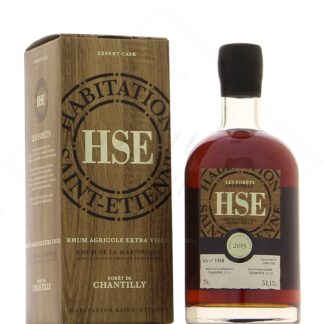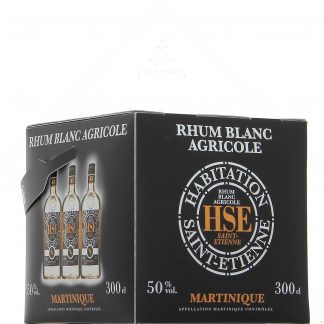Habitation Saint-Etienne (HSE)

The history of Rhum HSE
The adventure of HSE Rum began in Gros Morne, Martinique. The Domaine de La Maugée was built in the early 19th century, and renamed Habitation Saint Étienne in 1863. It was Amédée Aubéry who bought the sugar dwelling in 1882, transforming it into an agricultural rum distillery. At the time, the distillery operated with two-thirds of its own sugar cane, and one-third sourced from small planters in the surrounding area.
In 1927, it passed into the hands of the Simmonet family, and grew to become one of Martinique 's largest by the middle of the 20th century. Habitation Saint Étienne rum is the market leader on the island, and also does very well in mainland France through the négociant Pitterson.
The distillery was bought by the Dormoy family in 1984, before closing in 1988. Production was then transferred to the La Favorite distillery, which belonged to the same owner. Yves and José Hayot acquired the distillery in 1994, moving the distillation column to Simon, where it remains to this day.
In 2008, Habitation Saint Étienne took on its new Rhum HSE identity.
HSE Rum production
Sugar cane is harvested between February and June. It arrives at the distillery as quickly as possible, often in less than an hour, to keep the juice extremely fresh. It is pressed several times, then the juice is analyzed to adapt the fermentation process. Fermentation lasts between 24 and 36 hours, in stainless steel tanks with a capacity of 20,000 liters. The result is a vesou with an alcohol content of around 5%.
This fermented cane juice is distilled in a Creole column, and yields an average of 73%. The white rum thus harvested complies withAOC Martinique specifications. In general, 1.5 million rums are produced each year.
The rum is then sent to the historic dwelling at Gros Morne. As always, the reduction is carried out using water from the Lézarde River, which flows through the dwelling.
The HSE Rum cellar is constantly expanding, and now houses almost 6,000 casks. The increase in capacity is striking: whereas 2,000 liters were aged each year in the early 2000s, the number has now risen to 160,000 liters.
The first part of the aging process invariably takes place in new American oak barrels. This enables HSE Rum to maintain a consistent, controlled profile for the first 4 to 6 years. After that, it is mostly aged in new French oak barrels, simply "seasoned" by a few passages of HSE Rum.
The HSE range of rums
HSE Rhums offers a complete range of references, from white rum to very old rum. The brand stands out for its desire to innovate and break new codes. For example, it was among the first to introduce the notion of a white tasting rum. The 2000 cuvée, which had been resting in vats for 2 years, was a great success. Other vintages followed, with some very interesting developments.
HSE is also famous for its World Finishes series. The distillery offers very old rums finished in "exotic" casks containing other spirits. Finishes in whisky, wine or sherry casks have all been great successes.
There are also some exceptional vintages, such as 1998 (a great year in Martinique) and 1960, which have become veritable collector's items. Read less















